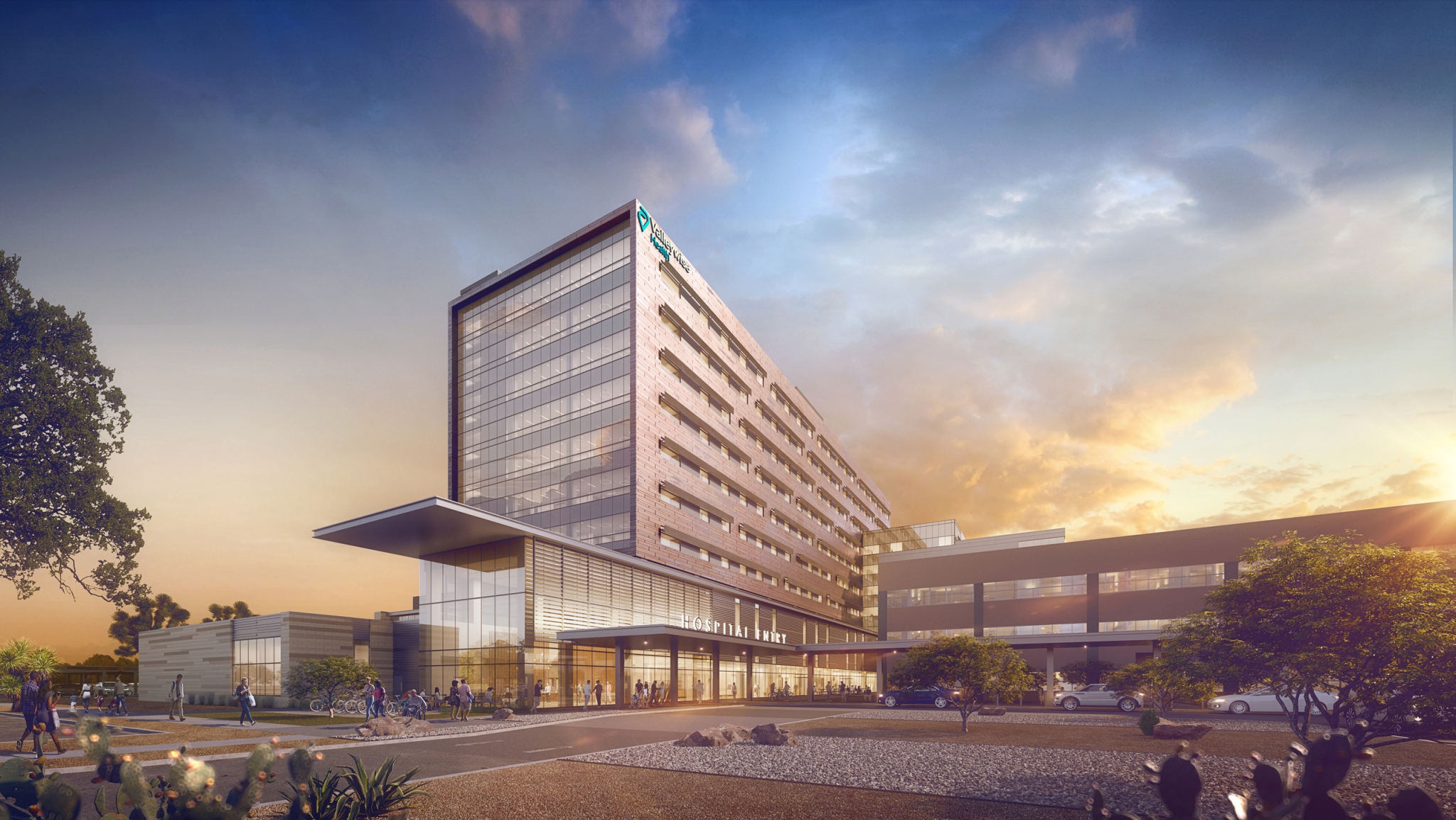Harnessing the Power of High-Performing Thermal Envelopes

A version of this piece was originally published in Medical Construction & Design Magazine.
As we zero in on the decades ahead, the vision is beaming green: Green energy. Green biomedical science. Green design.
Increasingly, states, municipalities and other entities are requiring higher standards for green energy, such as the University of California system’s carbon-neutral mandate, which are influencing healthcare developments throughout the country. These standards incentivize teamwork with designers to create more sustainable, future-forward medical facilities.
That said, it is challenging for many reasons — one being that medical facilities are high-energy buildings. However, one energy-saving design technique becoming more popular is the use of high-performing thermal envelopes.
These envelopes can help drive down energy demands for interior climate control and lighting through features including high-quality insulation, energy-efficient windows, vapor barriers, continuous weatherstripping and air-control layers.
From a design perspective, the ability of the building envelope to resist heat transfers and protect the interior from the weather is a major factor in determining how much energy will be used for the following: lighting, heating, ventilation and air conditioning systems.
In hospital buildings specifically, these systems account for 70% of the energy.
So how does one construct a thermally efficient building on the scale of a regional medical center or acute care facility? When it comes to maximizing thermal efficiency, especially in largescale medical facilities, designers must examine a variety of factors.
Steps to sustainable envelopes
First, passive design principles still apply to this high-energy demand building type; these strategies should start with a careful selection of the site and detailed study of the microclimate to determine the best building shape, volume and orientation.
Second, with advanced thermal envelopes, designers can balance temperature and relative humidity highs and lows in building envelopes through the climate cycle.
When considering the amount and location of all fenestrations, it is imperative that designers balance the needs of natural light and ventilation with the impact of HVAC equipment. This means the difference between having a beautifully temperature-controlled facility versus a drafty or stuffy nightmare that will result in exorbitant energy costs and poor air quality for patients and staff.
It is also vital that every high-performance building assembly includes heat, water, air and vapor control layers each meeting the demands imposed by the yearly climate cycle, as well as the physical conditions that may impact the performance.
These four weather control layers must be carefully located in the assembly and work together—there is no point in stopping rainwater if moisture from air penetrating the wall can condense inside the wall cavity and cause mold, just as there is no point in controlling the vapor transmission if rainwater is allowed to penetrate through the exterior cladding or a badly detailed flashing in the window nearby.
Third, designers must consider thermally efficient materials and how to best utilize them. For instance, high R-values are best fitted for opaque materials for floors, walls and roofs.

A closer look at high-performance materials
In a largescale development like a hospital, poor windows can create an exponential drain of energy and monetary funds, resulting in a high cost of ownership and drain on the environment. Choosing strategic materials for something as ‘simple’ as windows — which are responsible for 25-30% of heat gained or heat lost in buildings — present stakeholders with attainable and significant tools to help improve the overall thermal envelope.
Double-paned windows, doors and skylights with a Low Solar Heat Gain Coefficient (at a minimum) are a must in high-performing assemblies. Additional features improve the performance from there — from Argon and other gases filling the gap between panes, to specialty coatings that allow less or more heat to be transferred to the interior.
Thermally broken frames that resist heat transfer through the window frame are also a must. Additional features such as glazing that can be dimmed with an electric charge or heat gain are also available.
These materials can be incredibly impactful. For example, energy-efficient windows, such as those made with a coated low-emissivity glass, can be six times more energy efficient than lower-quality windows.
Final step: client buy-in
Solutions like these can also be key in strengthening the pitch for client buy-in, which is often the largest hurdle toward the implementation effective design strategies, especially with green proposals that appear overly ambitious, unrealistic and costly.
Designers must be prudent to sell solutions over services, straying from monumental green ideas that could overwhelm the client.
Another key tool when designing high-performing thermal envelopes is hygrothermal modeling, a building science principal that can predict the performance of the building envelope, encompassing walls, floors and roofs. Hygrothermal modeling attempts to replicate the physical phenomena of heat and moisture flows present in the environment.
This analysis can formulate an estimated impact on the building enclosure through the meticulous study and investigation of material properties with the most updated climate data and software tools.
Focusing on thermal envelopes can be an excellent way for design teams to reduce carbon emissions on single projects, yielding quantitative data that support green standards
The results of scientific design, such as integrating an hygrothermal analysis, can greatly encourage client buy-in. The process consistently leads to thermally efficient wall designs that exceed minimum code requirements and save energy if designed in coordination with HVAC systems.
As with many green initiatives, high-performing thermal envelopes are win-wins for the grandiose (the global climate) and the humble (the human individual). Well-integrated thermal systems promote better air circulation, air quality and a sense of light that promotes optimism, hope and well-being.
Contact Our Leaders
